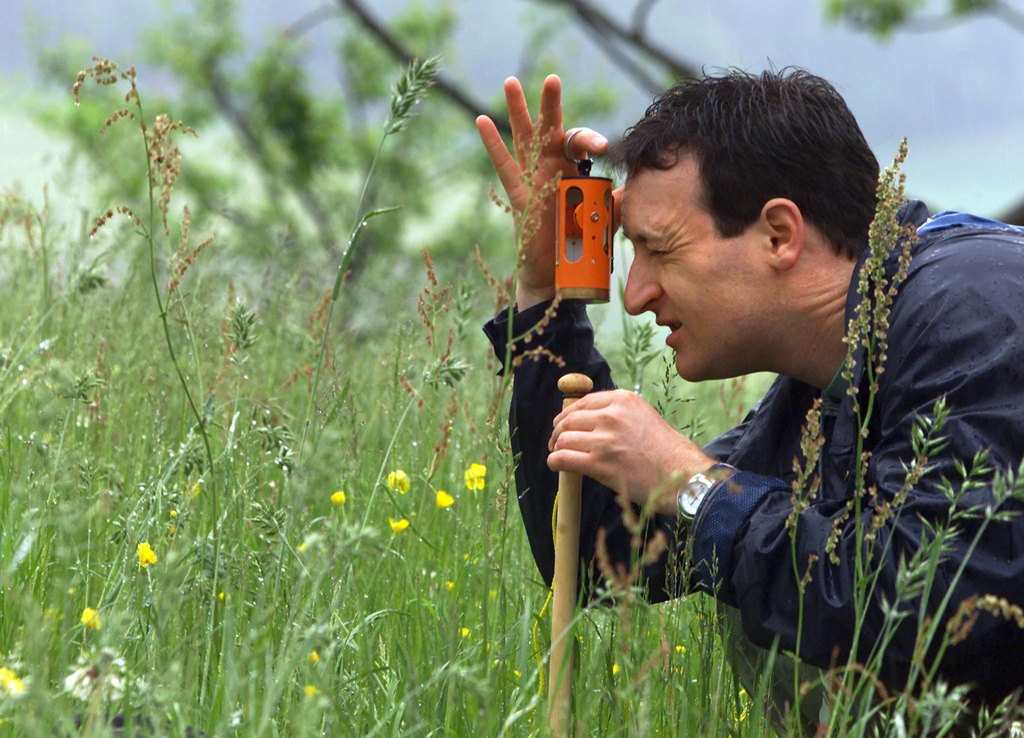Swiss fall short of ambitious biodiversity goal

Switzerland has failed to meet a target set in 2003 to halt the loss of biodiversity within its borders by 2010.
Dashing Swiss hopes of a turnaround by this year is a research project led by the Swiss Biodiversity Forum and involving more than 80 scientists and specialists in the field. The main conclusion: biodiversity continues to be under threat and diminishing in Switzerland.
Switzerland was one of several European nations to make the commitment at the fifth ministerial conference in Kiev on An Environment for Europe. Other countries agreed on the less ambitious goal of slowing, rather than completely stopping, the disappearance of various biodiversity species.
The findings of the research project, compiled in a new book, The Evolution of Biodiversity in Switzerland Since 1900, were presented at a conference in Zurich on Thursday.
Overall, biodiversity decreased between 1900 and 1990, with some regions of the country worse hit than others. Diversity reached very low levels in the central plateau but species were best preserved in the mountains.
To date, the loss of biodiversity in forests – home to the richest collection of species such as insects and mushrooms – has not been curbed. In the central plateau 100,000 “obstacles” such as hydroelectric towers are disrupting rivers and torrents. The surface area and quality of meadows and pastureland have deteriorated, notably because of urban sprawl.
Of the 10,341 species on under-threat red lists, 236 disappeared in Switzerland by 1990. In contrast over the past 20 years, the loss of various species and of the surface area for certain ecosystems has been slowed.
Difficult goal
But the experts say the “crest of the wave” has not yet been reached, and it will not be possible to expect a positive counter trend before 2020 owing to increasing agricultural farming in mountains, urban sprawl and growth in tourism and leisure activities. New invasive species and direct and indirect effects of climate change will also impact on already delicate ecosystems, the report warns.
“There is a fear that the benefits of ecosystems, such as their role in buffering climatic change, storing carbon and water purification and their function as a space for relaxation will not be guaranteed in the long term if the level of biodiversity remains this low,” warned Daniela Pauli, of the Swiss Biodiversity Forum.
But the picture is not all bad, says the nature protection organisation Pro Natura. Spokesman Nicolas Wüthrich says Switzerland was right to have set a high target for 2010 because it forced the country to act ambitiously and helped boost people’s awareness of the issue.
“We knew it would be very difficult to reach that objective. It is not really a failure. What’s more surprising was that the government was still saying last year that we probably would reach the targets. The experts knew we couldn’t,” he told swissinfo.ch
“Now things are clear and it should contribute to awareness among the public, the authorities and politicians that it is a serious problem.”
National strategy
Pro Natura, like other environmental groups, is pinning its hopes on a national biodiversity strategy that is being drawn up and due for review by parliament in 2011.
“It will enable us to act in a more co-ordinated and more efficient way,” he said, for example in setting objectives and using funding.
The Federal Environment Office told swissinfo.ch that while it was clear that the 2010 objective had not been met, having an ambitious target had created a dynamism and encouraged the various parties to work together towards a common goal.
For the new national strategy to work, all the different sectors would have to be actively involved, said the spokeswoman.
“There is a certain disappointment in not meeting the objective. It was a very ambitious goal. But there is also light at the end of the tunnel,” said Thomas Walter, one of the report authors.
“We have made progress and we can make more progress but we need to work harder.”
The report by the Swiss Biodiversity Forum states that Switzerland already has a good legal basis and numerous measures in place for protecting biodiversity – without which, the situation would be even worse. But it notes that “their application leaves a lot to be desired”.
“Judging by the considerable loss of biodiversity observed before 1990 and the persistent decline of populations, of environments and their quality, the need to intervene nevertheless remains urgent,” concludes the report.
“Switzerland should commit to maintain, develop and create special habitats on a grand scale. That would only be possible if all the actors in politics and society shoulder their responsibility for biodiversity.”
The national strategy should help achieve this, the report notes.
Jessica Dacey, swissinfo.ch
A national strategy for protecting biodiversity is being developed by the government with a consultative body of NGOs and interested organisations.
The government set out two main aims for the strategy: to maintain sustainable biodiversity and for biodiversity to be sufficiently rich to adapt to changes.
It also set out four pillars of action: to provide enough protected space, to use resources in the country sustainably, to better understand the economic value of biodiversity and for Switzerland to better assume its international responsibilities for biodiversity.
The strategy is due before parliament in 2011.
The Federal Environment Office describes biodiversity as the life that surrounds humans in all its forms, i.e. ecosystems, species and genetic diversity within a species. A third of humans’ food is drawn from plants pollinated by wild animals. Natural ecosystems contribute to the good quality of drinking water.
The effects of climate change on biodiversity are already visible – certain alpine species are moving up to higher altitudes by an average distance of 13 metres.
A national biodiversity monitoring programme, which was launched in 2001, shows that Mediterranean species such as different types of butterflies, have been arriving in alpine areas.
One place in the world where biodiversity is thriving is Borneo. WWF announced on April 22 that the world’s longest insect had been discovered there – a stick insect measuring 56.7cm – along with 123 previously unknown animal and plant species.
Overall, the researchers discovered 67 plants, 17 fish, 5 frogs, 3 snakes, a bird, 29 invertebrates and two lizards.
A 10-centimeter-long cockroach was found on the same island in 2004.
“Borneo is a real reservoir of biodiversity, which is why the WWF is committed to protecting the more than 220,000 square km of forest area,” said Felix Gnehm, project manager at WWF Switzerland.

In compliance with the JTI standards
More: SWI swissinfo.ch certified by the Journalism Trust Initiative













You can find an overview of ongoing debates with our journalists here . Please join us!
If you want to start a conversation about a topic raised in this article or want to report factual errors, email us at english@swissinfo.ch.